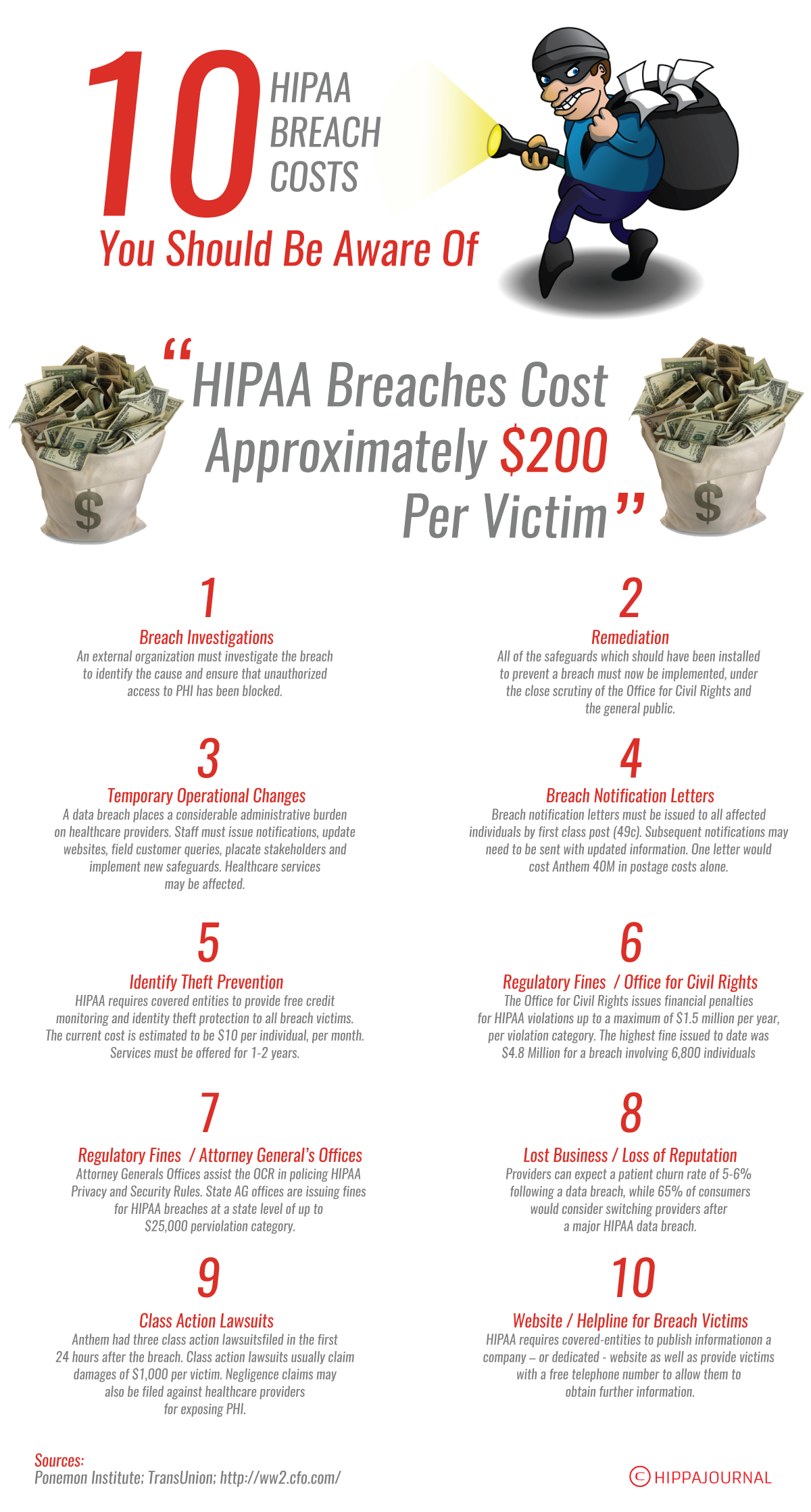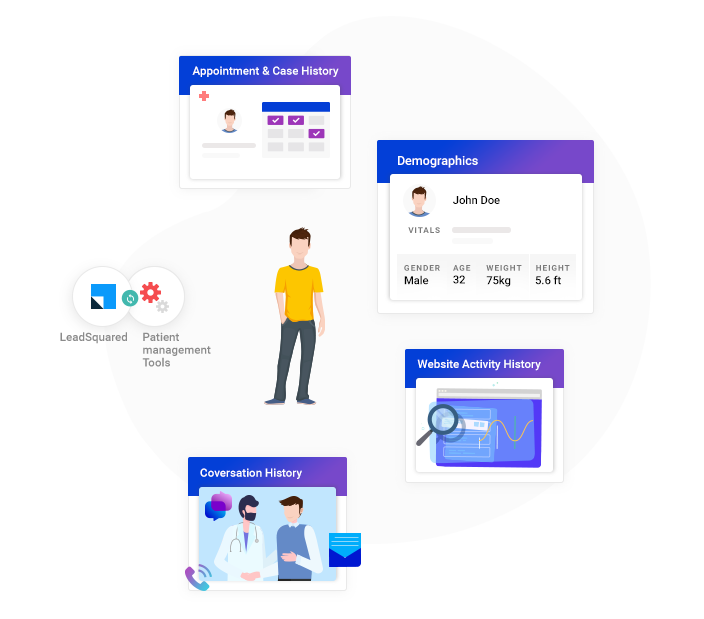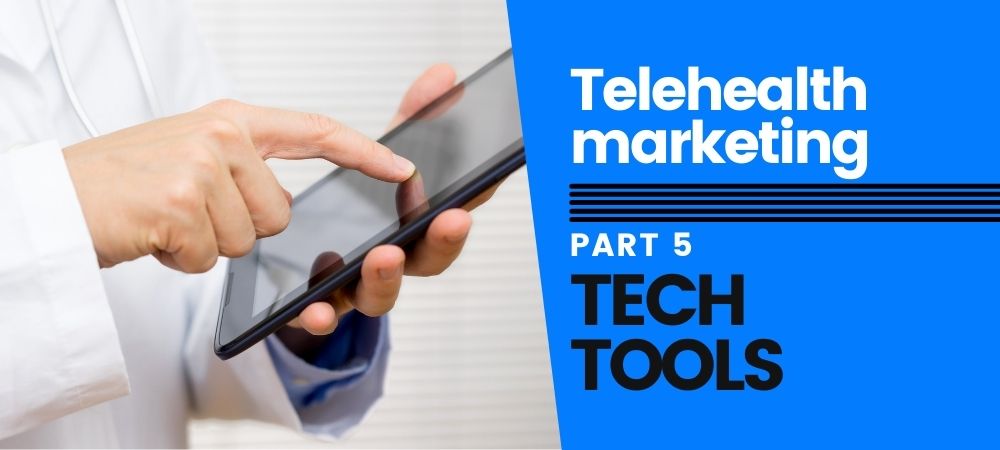Though they’re mostly invisible to patients, successful telehealth practices power their marketing programs with effective technology tools.
Let’s dive into the essential tools you’re going to rely on. But first…
Understand HIPAA compliance
You won’t need to hunt specifically for a HIPAA platform, but you will want to understand HIPAA compliance and be ready to deliver it.
For those in need of a refresher, HIPAA (or the Health Insurance Portability and Accountability Act of 1996) sets national standards for the protection of patient health information and secures patient data against unauthorized disclosure.
And yes: This law absolutely and unequivocally applies to telemedicine.
Any system that houses patient (or prospective patient) information—from your webserver to your customer database, SMS platform, video conferencing software, and beyond—must meet HIPAA security standards. A HIPAA breach can be devastating for your reputation…and your bottom line.
Case in point: HIPAA Journal reports a violation can cost around $200 per victim and incur state-level fines of up to $25,000 (per violation category). And that’s only the beginning…

Clearly, a HIPAA breach can be devastating for your reputatio and bottom line.
Painful penalties can be avoided by entering into a business associate agreement (BAA) with each and every one of your tech vendors. These agreements should guarantee HIPAA-compliant processes for storing, sharing, or otherwise handling all electronic protected health information (ePHI).
BAAs should also include:
- plans for data encryption to shield against unlawful hacks, and
- a program for systematic audits of all security measures and access activity
Unsure how to assess a proposed BAA?
Your practice likely has a HIPAA compliance officer* on staff. Use them. Ask for their guidance when finalizing your business agreements and check with them regarding changes to compliance regulations (so you can stay 100% up to date on what’s legal and what’s not). This is crucial in the current post-COVID era, as some restrictions for remote communications platforms have been suspended to accommodate the ongoing public health emergency. But these suspensions are subject to change.
*You might also consider a dedicated HIPAA compliance director for your team to help align your marketing efforts with all practice-wide HIPAA policies.
Power your practice with automation
As observed in a previous LeadSquared post:
“Workflow automation is the process of incorporating software systems that provide a virtual infrastructure to arrange, monitor, control, and coordinate different business processes or workflows including …sales and marketing, lead management, and much more.”
And though the word “automation” holds some negative connotation in an age where shrinking opportunities for human employment are a genuine concern, the general consensus appears to be that automation has the potential to enhance jobs, not render them obsolete.
In fact, 56% of business leaders plan to onboard some form of workforce automation over the next few years, while 74% of business leaders and employees express an openness to automation for at least some tasks.
It’s easy to see why.
The benefits of workflow automation for telehealth marketing are hard to ignore. Above all, automated processes:
- Save time
- Nurture leads by serving up relevant content
- Trace patient engagement activity
- And help maintain continuity of care for existing patients
When selecting an automation solution for your telehealth practice—which may be called customer relationship management (CRM), patient relationship management (PRM), or patient engagement—understand the system needs to provide:
A centralized hub for all your patient and prospect data
Your automation tool will need to provide a reliable, heavily safeguarded digital headquarter for storing names, demographic information, patient history (if applicable), and any other information pertaining to who each patient/prospect is and how/when they’ve interacted with your service.
A mechanism for designing and executing communications at each stage of the patient/prospect journey
You’ll want to map your content assets to their appropriate audiences (read: consumer segments) and thinking about when and where to deploy it.
For example, say you’ve crafted an email newsletter entitled: “6 Reasons Your Winter Doctor’s Visit Should Be Virtual.”
Your team will logically want to ensure this asset goes to patients or prospects who:
- have shown an interest in receiving emails
- live in areas affected by cold weather
- haven’t scheduled a winter telehealth appointment just yet
- don’t have a record of severe illness that would require an in-person checkup
Your team will also need to determine:
- when the newsletter will be most effective (i.e., late autumn/early winter)
- which point in the patient’s journey the newsletter will prove most impactful (i.e., the “awareness” stage, the “consideration stage,” etc.)
Once you decide on your “who” and your “when,” you can optimize rollouts for the “what,” plugging the newsletter into your automation system and programming your solution to send out the email only when the patient profile and corresponding patient’s journey meet your requisite conditions.
If this seems like a ton of work, understand: comprehensive automation telehealth tools are smart.
They can learn from your continued input and recognize when content speaks to specific leads. As you build your automation strategy, you’ll likely be able to implement engagement triggers—signals that direct your automation solution to send out certain assets based on previous customer activity/behavior.
Some real-world automation tools for your consideration:
- Patient management software
A platform that compiles patient data (such as forms, contact info, appointment history, etc.) and helps automate processes and communications surrounding upcoming visits, general practice announcements, and more.
- Traditional automation software
A solution that allows your team to design and launch marketing campaigns via video, email, social media, etc. (depending on the platform).
- Traditional customer relationship management software (CRM)
A standard business solution that gathers lead and customer data to help nurture and convert prospects through analysis as well as automated tasks (such as targeted emails).
Note: While any of these would be a useful addition to your program, it’s advisable to consider some combination of all three. Or a single solution with the capabilities of each. (More on this later.)
Put scheduling and communication tools in place
Part of your job as a telehealth marketer is to uncover the best methods of communication for your practice, as well as the best conduit for each method.
Some questions you’ll want to think about as you go:
Will email be your focal point?
As of 2020, 65% of healthcare providers listed email as their preferred “method of connection.” Yet email platforms vary in both scope and user experience. Before selecting one, ask yourself:
- Which email service can handle your patient/prospect load, campaign schedule, and content?
- Can your chosen provider guarantee encryption to ensure patient privacy?
- Would an alternative third-party message provider (such as a patient portal) work just as well for your marketing purposes?
How will text messages figure in?
It’s a fair question, especially given 70% of consumers think text marketing (SMS) is a truly effective way to grab their attention. Plus, SMS is a quick and easy choice for alerting prospects to upcoming events, blog posts, seasonal emails, etc.
Luckily, there’s no shortage of HIPAA-compliant text messaging platforms.
How will your department tackle video?
Obviously, video lies at the heart of telehealth. But one-to-one doctor visits might require a different video solution than, say, an educational webinar hosted for a crowd of curious consumers. As such, you’ll probably need a video strategy that’s just for marketing.
Video questions to review with your team include:
- Will you host videos on a public platform like YouTube?
- Or with a subscription service, such as Vimeo?
- Will videos encourage direct patient engagement (e.g., through a comment section or complementary survey)?
- If so, can you guarantee all ePHI will be protected?
Will your team benefit from an outsourced scheduling platform?
Normally, appointment bookings fall out of marketer jurisdiction. Appointment records may provide some data, but they can’t surface up content or act as a workable marketing tool.
Or can they?
Appointment software is expanding. So much so it can now function as a legitimate marketing channel.
Zocdoc, for example, will display verified patient reviews alongside time slot calendars to help generate interest in your practice.
10to8, on the other hand, offers video conferencing integration to schedule webinars, classes, and doctor-patient Q&As—all of which can help spread the word about your telehealth clinic.
Bottom line: Don’t discount booking software as a marketing tool before weighing its advantages.
Measurement
In the first installment of this series we stressed the importance of setting tangible marketing goals. Here’s where those goals come home to roost.
Your marketing strategy success hinges on quantitative KPIs––performance data markers that are monitored, measured, and synthesized to guide and inform all future actions.
Much like with automation, your system for performance measurement will require two basic elements:
1. A data headquarters for storing patient/prospect engagement information
2. A solution for analyzing this information and reinterpreting it via actionable reporting
If you’re thinking you can’t possibly collect and analyze data across all your active marketing channels, there’s delightful news headed your way:
Many marketing platforms have tools for analytics already built in. Analysis becomes mostly a matter of point and click.
A robust sales enablement solution, for example, can trace engagement trends for a variety of content assets and spin these findings into easy-to-read reports, allowing you to seamlessly plan your next steps.
Similarly, a HIPAA-compliant email platform will feature real-time analytics to help keep track of KPIs such as click, open, and bounce rates.
Depending on your KPIs you monitor (number of appointments booked, number of website visits per month, scroll depth percentages, number of assets downloaded, etc.), you may want to leverage a digital insights platform, which focuses primarily on analyzing data rather than offering analysis as an adjunct service. (If you go this route, however, make sure your chosen platform can offer a suitable HIPAA-compliant BAA.)
All of It
While no solution can claim to give your telehealth marketing team absolutely everything, a multi-functional CRM checks a lot of requisite boxes.
Thankfully, the past few years have ushered in a new breed of CRM that promises Swiss-army-knife levels of functionality as well as a host of specialized services designed to support individual industries like telehealth.

Here’s a brief overview of the top features of a healthcare CRM that’s been optimized for telehealth practices:
HIPAA compliance
A multifaceted CRM such as LeadSquared will come with a BAA that’s prepackaged and ready to use. Your marketing team can rest assured all industry-defined protocols will be easily met without any hassle. Breach anxiety: solved.
Automation
High-powered CRM will let you automate almost everything: from appointment scheduling to email outreach, feedback surveys, and beyond. Once a prospect becomes a patient, you can also utilize the platform to program personalized communications for further continuity of care.
Scheduling and communication
A 360° CRM will integrate with healthcare call systems and appointment booking software, allowing you to connect more directly with prospects and offer visibility into all available telehealth time slots. This type of platform will also enable automated texts and emails for existing patients. (Ideally with the help of an in-built email tool, complete with flexible templates.)
Measurement
360° CRMs will also provide a wealth of reporting capabilities in categories like patient satisfaction, campaign performance, prospect-to-patient ratios, and more. They will also monitor for consumer behavior markers such as number of website visits or number of phone calls made to your clinic.
You’ve reached the end of our 5-part series on telehealth marketing.
Did you miss any of the previous articles?
- Why You Need a Telehealth Marketing Plan
- Why Your Telehealth Website Has to Be Amazing (and How to Get It That Way)
- Inbound Marketing Strategies for Telehealth Practices
- Outbound Marketing Strategies for Telehealth Practices
For your continued reference, we’ll be presenting all five installments as a downloadable eBook to serve as a constant compass on your telehealth marketing expedition.
You’re past the telehealth crossroads now and headed down a new, deliberate path. Enjoy the journey.









